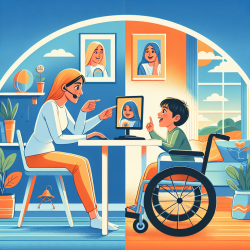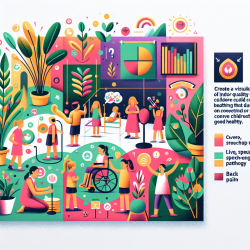The COVID-19 pandemic has reshaped many aspects of our daily lives, including how adolescents engage in physical activities. A recent study titled "Parent-adolescent agreement in reported moderate-to-vigorous intensity physical activity during the COVID-19 pandemic" provides valuable insights into the discrepancies between parent and adolescent reports on physical activity levels. This research offers a unique opportunity for practitioners to enhance their skills and improve interventions.
Understanding the Research Findings
The study analyzed data from the Adolescent Brain Cognitive Development Study, focusing on moderate-to-vigorous intensity physical activity (MVPA) during the early months of the pandemic. It found that there was generally low agreement between parent and adolescent reports of MVPA, despite increased time spent together at home. Adolescents reported higher levels of MVPA compared to their parents' reports, particularly in households with higher incomes.
Key findings include:
- The median MVPA reported by adolescents was 2.17 hours per week, while parents reported 1.52 hours per week.
- Significant discrepancies were noted in households with income over $75,000.
- Bland-Altman plots showed higher agreement among adolescents reporting low levels of MVPA.
Implications for Practitioners
The study highlights several areas where practitioners can focus their efforts:
- Encourage Open Communication: Facilitating discussions between parents and adolescents about physical activity can help bridge reporting gaps and foster better understanding.
- Promote Family-Based Activities: Encouraging families to engage in joint physical activities can increase overall MVPA levels and improve parental monitoring.
- Utilize Technology: Incorporating device-based measures like accelerometers can provide more accurate assessments of physical activity levels.
- Sociodemographic Considerations: Tailoring interventions based on household income and other sociodemographic factors can enhance effectiveness.
The Path Forward: Encouraging Further Research
The study underscores the need for continued research into parent-adolescent agreement on physical activity reporting. Future studies could explore the use of technology to validate self-reports and investigate the underlying reasons for discrepancies. By understanding these dynamics, practitioners can design more effective interventions that promote healthy lifestyles among adolescents.
The insights gained from this research are invaluable for practitioners seeking to improve their skills and make a meaningful impact on adolescent health. By embracing these findings and encouraging further exploration, we can work towards a future where accurate reporting and increased physical activity are the norms.










